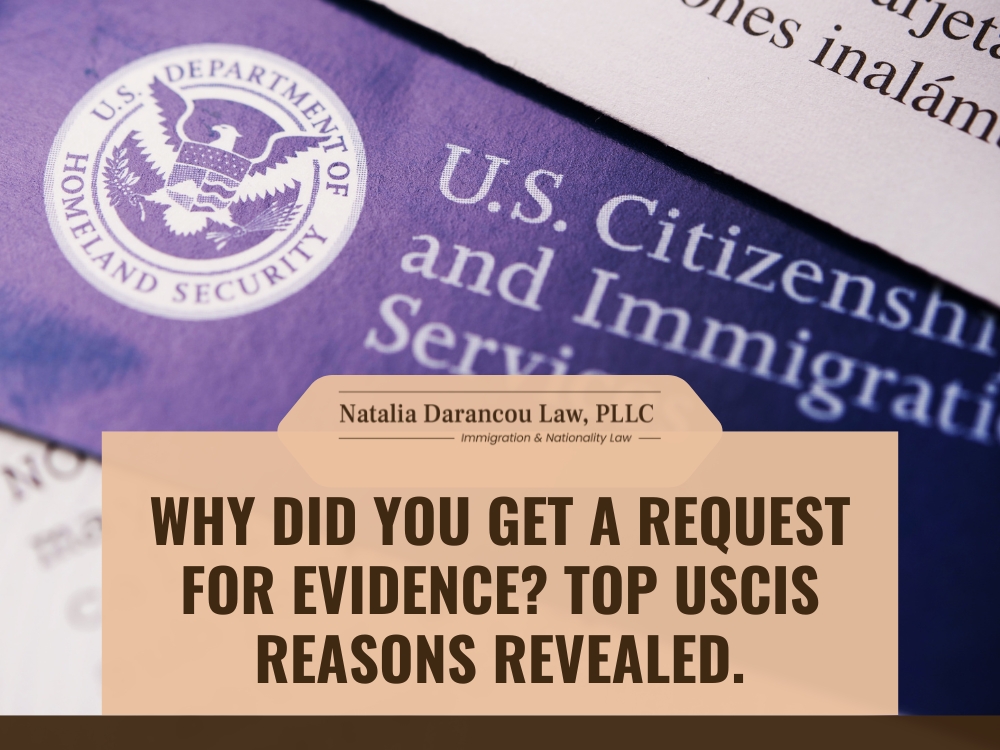Receiving a request for evidence (RFE) from U.S. Citizenship and Immigration Services (USCIS) when applying for immigration benefits can be stressful. However, a request for evidence is not a denial. Still, you must provide additional information or missing documentation that they ask for to strengthen your case.
This guide will explain what a request for evidence is and how to respond to a request for evidence.

Request Help Today

We have a 4.9 Star Rating with over 30 reviews on Google!

We are a woman-owned company and proudly committed.

Natalia Darancou was born and raised in El Paso, Texas to Mexican-American parents and is a native Spanish speaker.

Member of the New York State Bar, Texas State Bar, and a member of the American Immigration Lawyers Association (AILA).
USCIS issues a request for evidence if they need additional information to process and evaluate your immigration application. Here are common reasons for receiving a request for evidence:

You receive a request for initial evidence when your application is incomplete due to missing initial documentation. Some examples include:
A request for initial evidence typically serves as an early warning signal, allowing you to complete your application before it progresses.
A request for evidence has specific instructions listing what’s missing or insufficient and how you can adequately respond.
Collect the documents requested by USCIS. Ensure each document is accurate, complete, and formatted as specified. Examples include:
A request for evidence has instructions on how your documents should be presented. Use labeled tabs or headers to identify evidence corresponding to USCIS’s requests. Include the original RFE notice with your response for reference.
If you cannot provide missing documents, explain why and offer alternative documentation that fulfills the requirement. Add a brief explanation showing USCIS that you’ve addressed the request thoroughly.
USCIS typically allows between 30 and 87 days to respond. Your deadline will be explicitly mentioned in the RFE. Submit earlier rather than later to account for any delays in preparation or mailing.
Keep copies of everything you send and proof of delivery (such as a tracking number) to confirm that USCIS received your response.
The notice always clearly specifies the response period for a request for evidence. Failure to respond by the deadline can result in the denial of your application.

After you respond to an RFE, USCIS will resume processing your application. Possible outcomes include:
Getting a request for evidence adds time to your case timeline. A thoughtful and well-prepared response can lead to a more favorable result.
There are ways to reduce the likelihood of receiving a request for evidence:
Dealing with USCIS requests can be complicated, and a misstep could jeopardize your immigration case. Working with an experienced immigration lawyer can offer valuable advice to avoid future requests and build a stronger case.
Contact Natalia Darancou Law, PLLC, and we will guide you through your immigration process. Request a consultation today!
